Staircase design is an essential component of a building, providing access to different floors and roofs. A staircase consists of a series of steps: a tread (the horizontal part, where the foot will rest) and a riser (the vertical position part).
What is a staircase?
Although their design can vary, good staircase designs are essential for multi-storey buildings, especially those of low height, where they could be used in alternation with or instead of elevators. Staircases can be a means of vertical circulation and an elegant decorative installation for homes, hotels, stores, libraries and so on. So, what different forms of staircase can you install in your home, store or other establishment?
What are the different types of staircase?
Here are 8 different types of staircase. Let’s go through them one by one:
1. Straight staircases
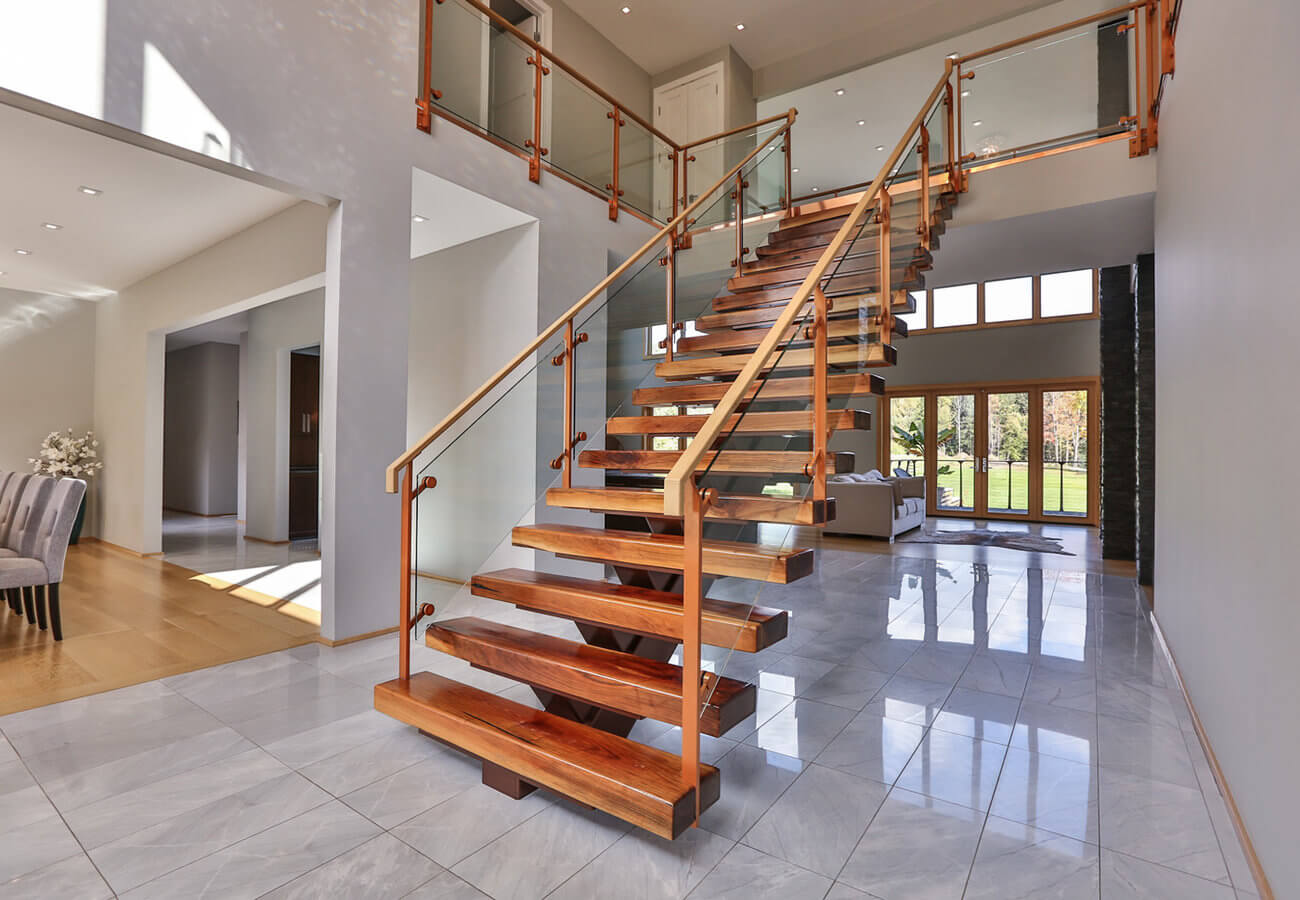
Straight staircases are the easiest and most essential to design. They need no support other than the floor at the top and bottom. However, they require sufficient linear space where they can be placed, and this space could become even longer if a landing were to be added. A mid-level landing would be necessary if floor heights exceed 12 feet (3.6 m).
when and where are straight staircases best suited for practical applications?
Straight staircases are a practical choice for areas with limited space, thanks to their ability to occupy a minimum of floor space. They are frequently used in small commercial buildings, apartments and residences.
2. L-shaped staircases
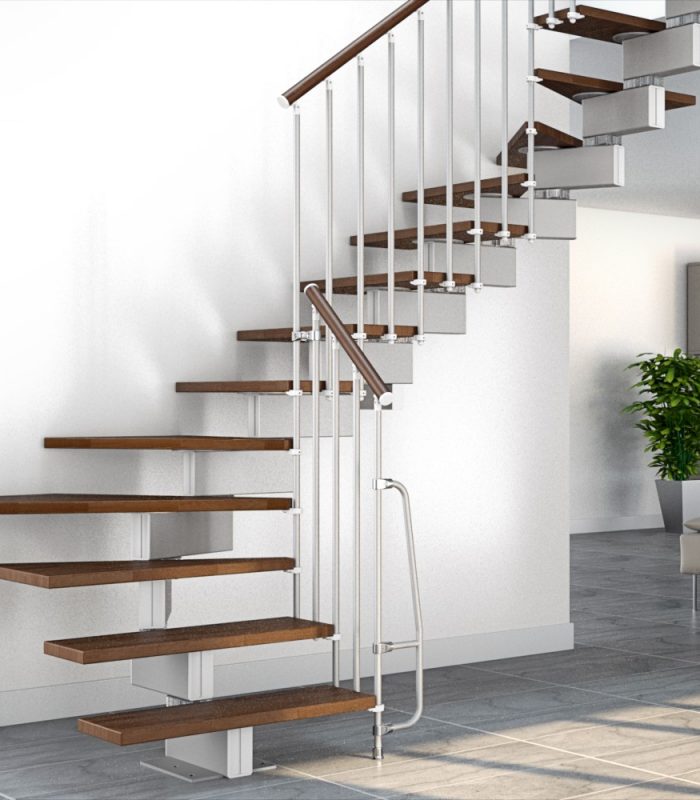
L-shaped staircase, steel – Courtesy of The Staircase People
If you rotate the top part of your straight staircase, beyond the landing, by 90 degrees, you’ll get an L-shaped staircase. This type is, however, a little more complicated than straight staircases. For example, the landing is necessary and requires additional support, usually set into the side walls.
L-shaped staircases may be more visually appealing. They’re also safer than straight staircases, thanks to the landing, which gives ascenders a brief pause and reduces the risk of accidental tripping. As for where to place them, corners would be best. L-shaped staircases with a landing not exactly halfway up, but closer to the top or bottom floor, are called long L-shaped staircases.
when and where are L-shaped staircases best suited for practical applications?
L-shaped staircases are well suited to areas where a turn is needed, such as in the corner of a room. They are frequently used in larger homes, hotels and commercial buildings.
3. Revolving staircases
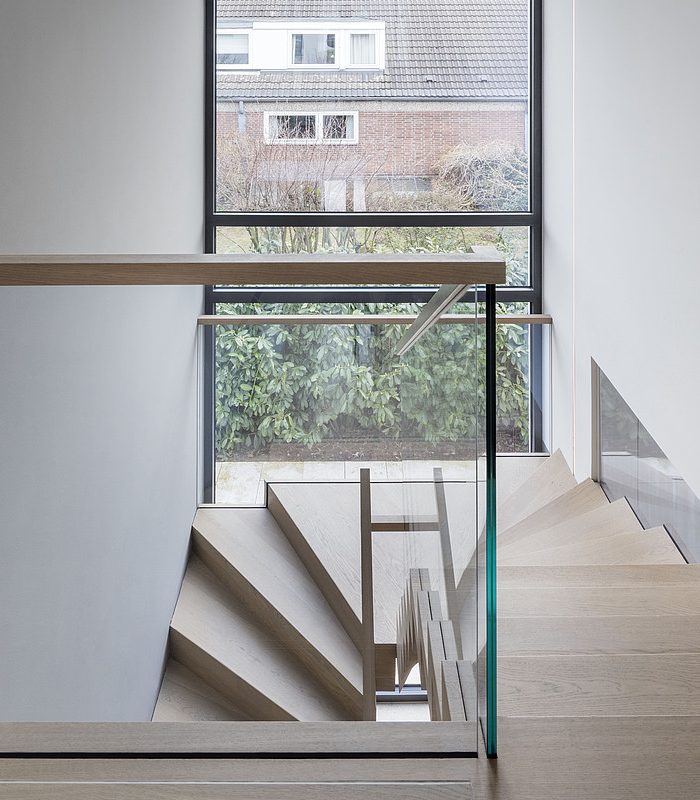
These are L-shaped stairs with a twist. Instead of a landing, they have 2-3 “winding” staircases connecting the upper and lower flights. Twisting staircases are wider on one side than the other, mainly to save space. They can generally be triangular or kite-shaped.
Winders give L-shaped staircases a more pleasing feel by gradually and spontaneously linking the upper and lower flights. However, the extra detail makes them harder to design and more difficult to navigate.
4. U-shaped staircases
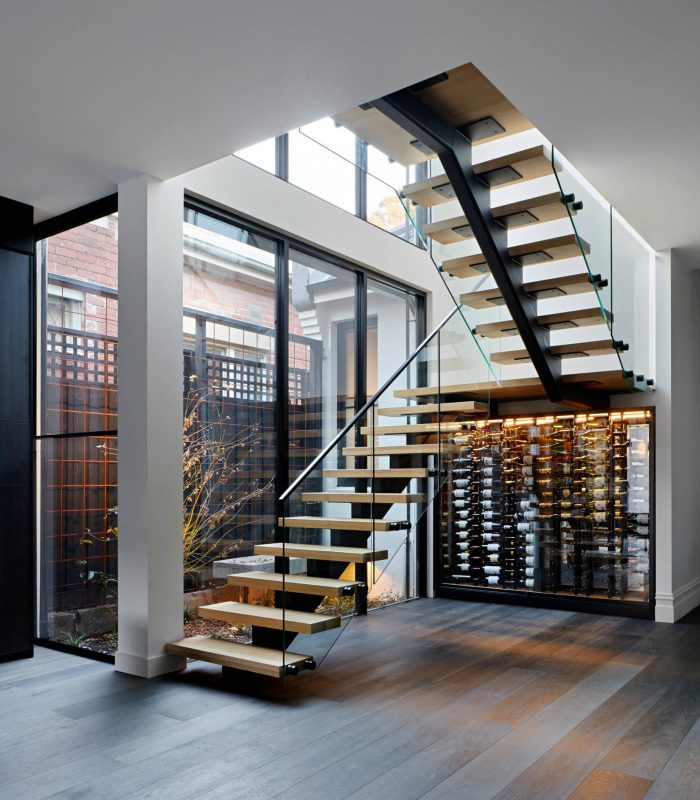
Also known as a half-turn staircase, the U-shaped staircase comprises two parallel flights separated by a landing. This is the design most commonly used in office buildings, apartment blocks, public facilities, etc.
If the 180-degree landing is replaced by an additional flight of stairs and two 90-degree landings, the U-shaped staircase becomes a quarter or double L-shaped landing. U-shaped staircases can be easily placed in an architectural plan; however, they require more support than straight staircases.
When and where are U-shaped staircases best suited for practical applications?
U-shaped staircases are often used in spacious areas and can create a grand and impressive entrance. They are frequently found in luxurious residences, high-end hotels and large commercial buildings.
5. Spiral staircases
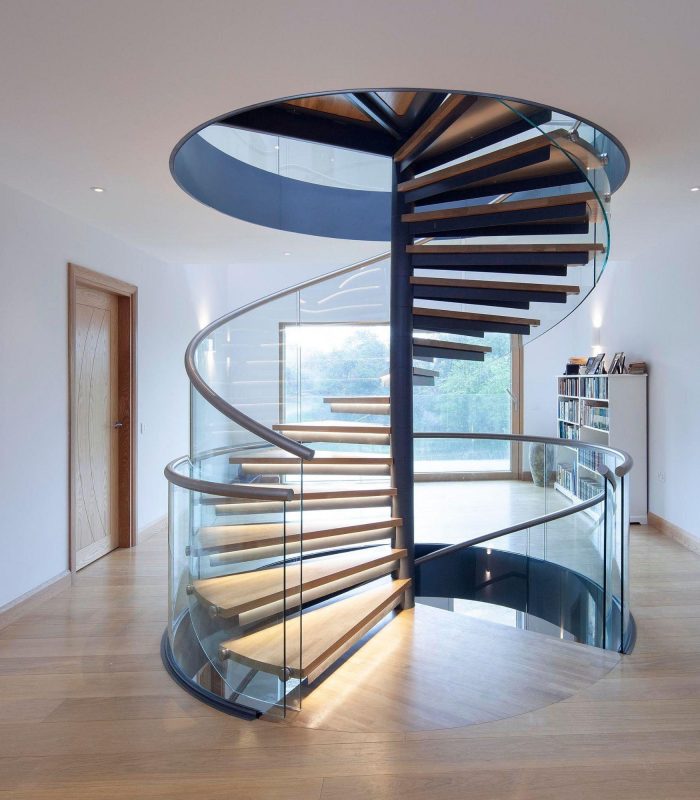
The steps of this type are wedge-shaped and follow the form of a helix. They revolve around a central pole and, seen from above, resemble a complete circle, where the treads are the sectors of this circle.
Spiral staircases are compact, so they can be used where space is limited. They can also be used for lightweight structures, such as beach houses and tree houses. They can be quite attractive and don’t require much support, just the center post and landing.
When and where are U-shaped staircases best suited for practical applications?
Spiral staircases are often preferred for compact areas where conventional staircases won’t fit. They are frequently installed outdoors, in attics and loft spaces.
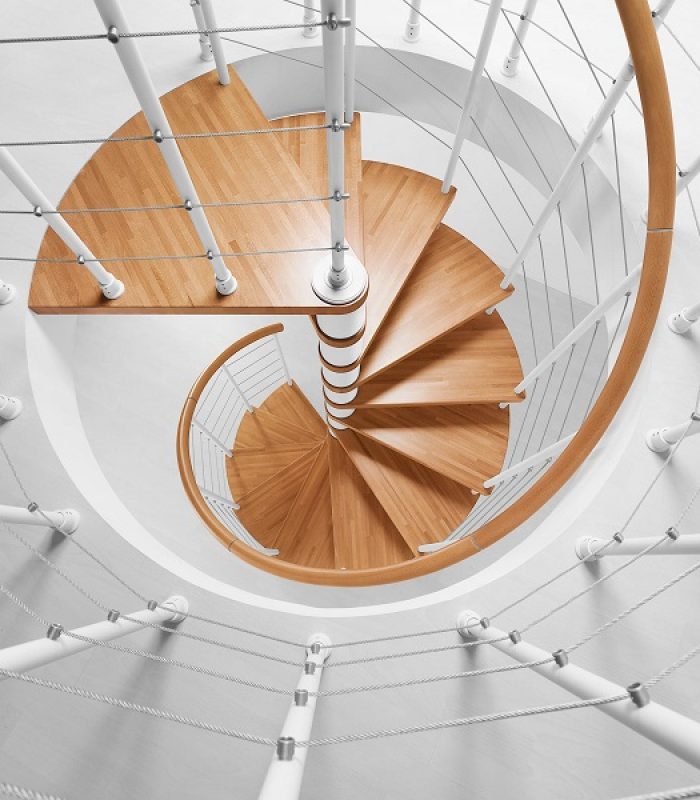
However, spiral staircases are not the safest choice here. The shape and distribution of the steps make them easy to trip over. That’s why they can’t be used as primary staircases, nor can they be climbed up or down with heavy objects.
6. Curved staircases
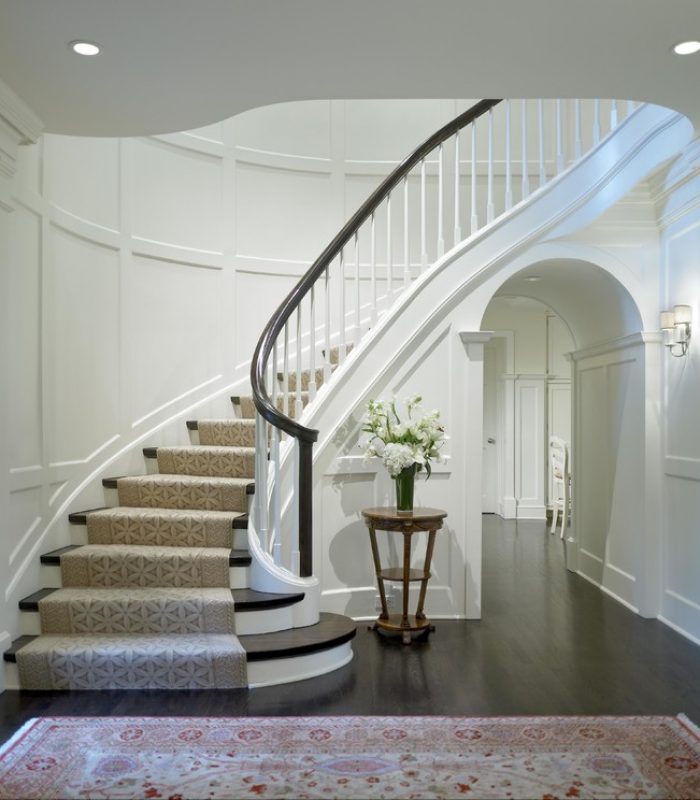
This type is repeatedly mixed with spiral staircases, and like spiral staircases, it follows a helical path but with a much larger radius. So, in the end, the steps don’t form a complete circle, but rather an arc of that circle.
Curved staircases can be quite graceful, often used to make a good impression in manor houses or hotels. They are much easier to use than spiral staircases, especially if the radius is large, but on the other hand, they are more difficult to build. Of the seven types examined here, they can be the trickiest.
When and where are U-shaped staircases best suited for practical applications?
Staircases with a curved design are ideal for creating a grand, elegant entrance or when a curved shape is required for the design. They are frequently used in large homes, hotels and commercial buildings.
7. Bifurcated staircases
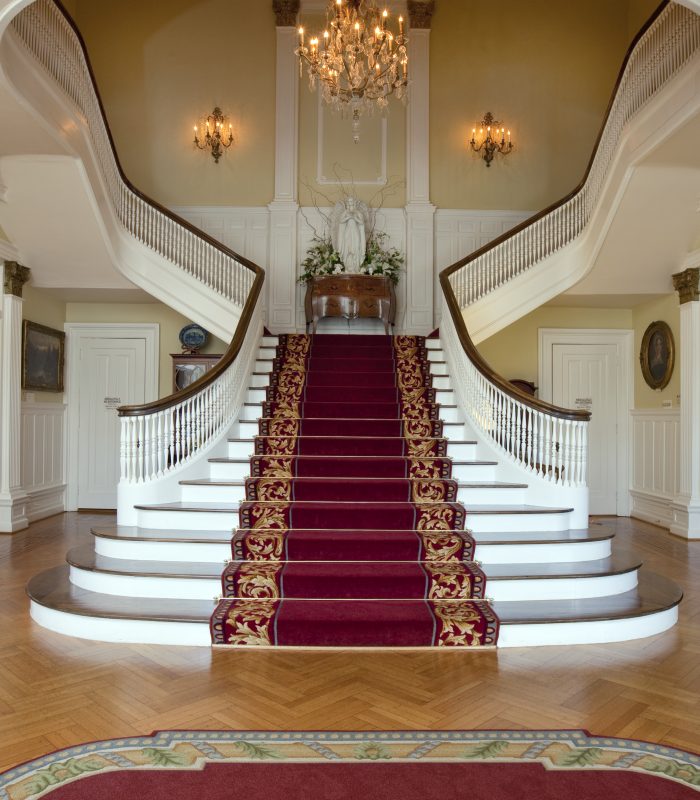
These grand staircases can imply luxury and grace, so they’re commonly used for sumptuous mansions, palaces or sometimes cruise ships. However, they also have their practical purposes and contemporary finish.
Bifurcated staircases comprise a wide flight of steps that reaches a landing, then divides into two smaller ones that go in separate directions.
when and where are bifurcated staircases best suited for practical applications?
Bifurcated staircases are well suited to spaces where an impressive entrance is required, but the available floor space is limited. They are often used in large residences, hotels and commercial buildings with limited floor space that still require an impressive entrance. In addition, bifurcated staircases are ideal for areas where two separate staircases are required, such as when it’s necessary to have a staircase leading to two different levels.
8. Escaliers en échelle
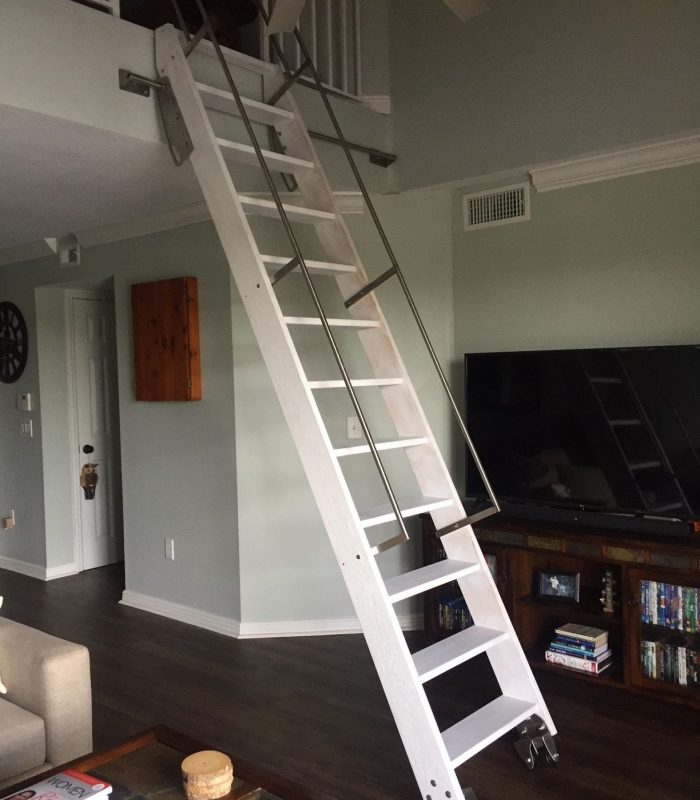
Escalier en échelle, gracieuseté d’Acadia Stairs
Une échelle est un équipement avec une série de marches (également appelées échelons) entre deux longueurs verticales de bois ou de métal. Il doit être appuyé contre un mur ou une autre surface plane comme support. Une échelle est portable, ce qui signifie qu’elle peut être déplacée d’un endroit à un autre.
quand et où l’échelle Stairs est-elle la mieux adaptée pour être utilisée dans des applications pratiques ?
Les escaliers en échelle sont bien adaptés aux zones où un espace petit ou exigu doit être accessible, comme les lofts, les greniers et les mezzanines. Ces escaliers se trouvent fréquemment dans les structures résidentielles où des espaces de vie supplémentaires ou des zones de stockage doivent être atteints. Les escaliers en échelle sont également utilisés dans les environnements industriels pour accéder aux étagères hautes ou aux mezzanines dans les usines ou les entrepôts.
[ad_2]
